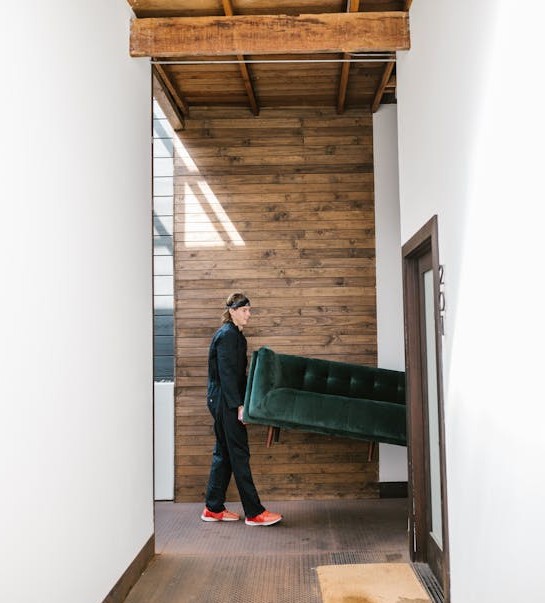Measure and Plan
Measure the furniture:
Find the height, width, and depth at the item’s widest points, including any non-removable parts like arms on a sofa.
Measure the doorway:
Measure the width and height. For extra clearance, measure the width from the inside of the frame, after removing the door. Don’t forget to account for any tight hallways, corners, or low ceilings that you have to pass through.
Compare measurements:
See how the furniture dimensions compare to the opening sizes. Your strategy will depend on whether you have a tight fit, a very tight fit, or if the item simply won’t fit without modification.
Disassemble Furniture
Remove detachable parts:
Remove everything you can, such as cushions, pillows, drawers, and removable legs. This is often the easiest fix.
Look for modular connections:
Some furniture, especially sectional sofas, is designed to be taken apart. Check underneath for connectors or brackets that hold the sections together.
Disassemble the frame:
If necessary, some upholstered sofas and wooden furniture frames can be partially taken apart. For upholstered furniture, this may involve removing staples from the dust cover to access the bolts holding the back or arms in place. For wood furniture, screws or dowels can sometimes be removed.
Use Angled Maneuvering
Stand on end (vertical):
If the height of the doorway is greater than the furniture’s width, stand it up on its end and rotate it through.
The diagonal twist:
With one person on each side, tilt the piece of furniture at a 45-degree angle. Have the person with the “leading” arm guide it around the door frame, using the corner of the furniture as a pivot point.
The hook method:
For sofas, stand it on one end. Move the arm through the doorway first, then rotate or “hook” the sofa’s back around the frame.
Remove the Door and Frame
Remove the door:
Gain an inch or two of clearance by removing the door from its hinges. Place a nail at the bottom of the hinge pin and tap it upward with a hammer.
Remove door stops and hinges:
For even more space, you can use a screwdriver to remove the door stops (the wood strips that the door closes against). You can also unscrew the hinges from the frame.
Remove the door trim (last resort):
For a few more critical inches, you can carefully pry off the trim from both sides of the door frame. This is a more involved process and may require some patching and repainting afterward.
Call the Pros
In summary, before undertaking the task of moving your furniture by yourself, consider hiring professional movers and that will make your relocating experience less tiresome and frustrating.
Note: On portable moving containers, look for doors that swing wide open and are held with safety latches so it is easy to load and secure your largest items. Call K-BOX if you want to move in-state at 918-271-7400 or text us at 918-381-9204 for more information about our services.

